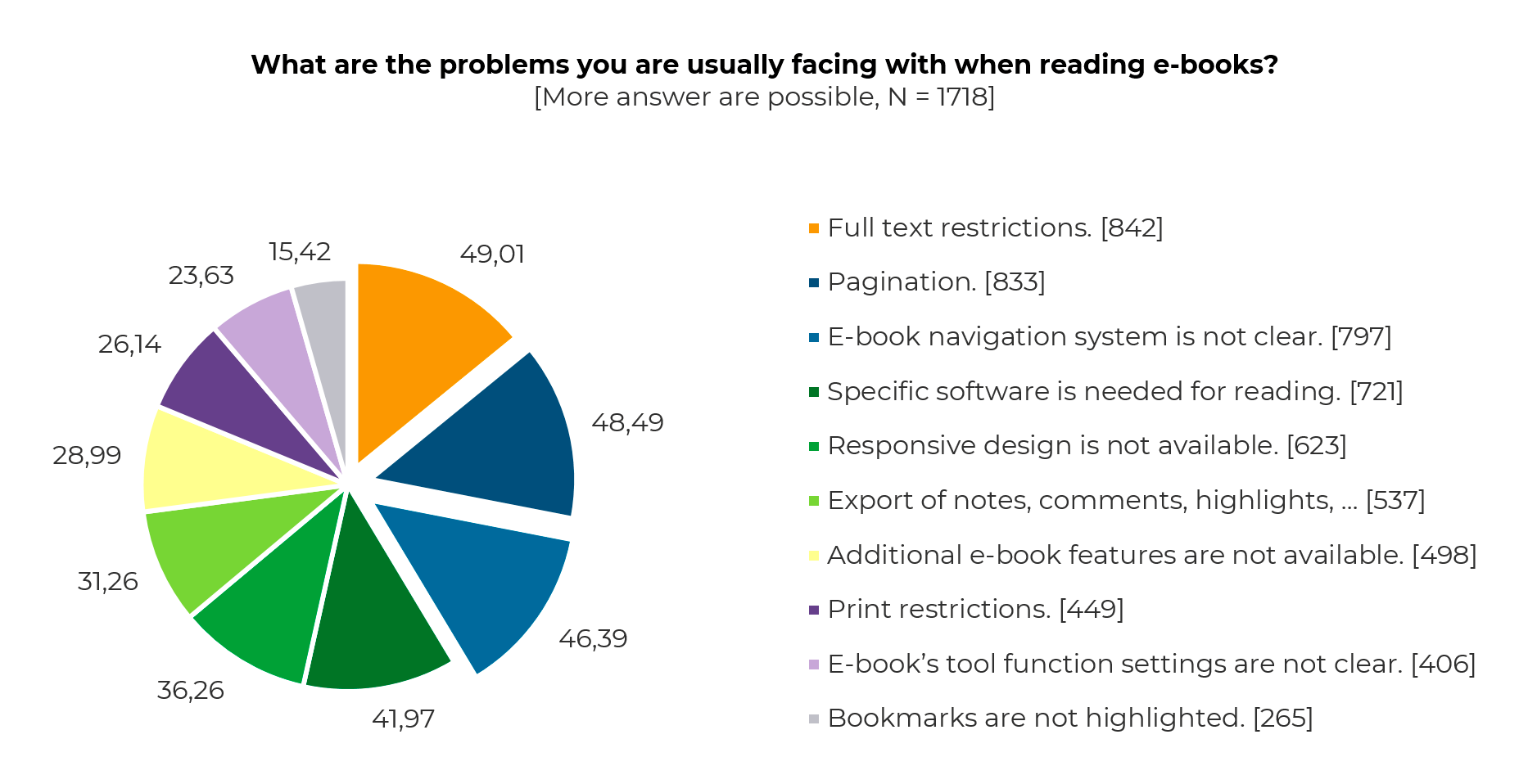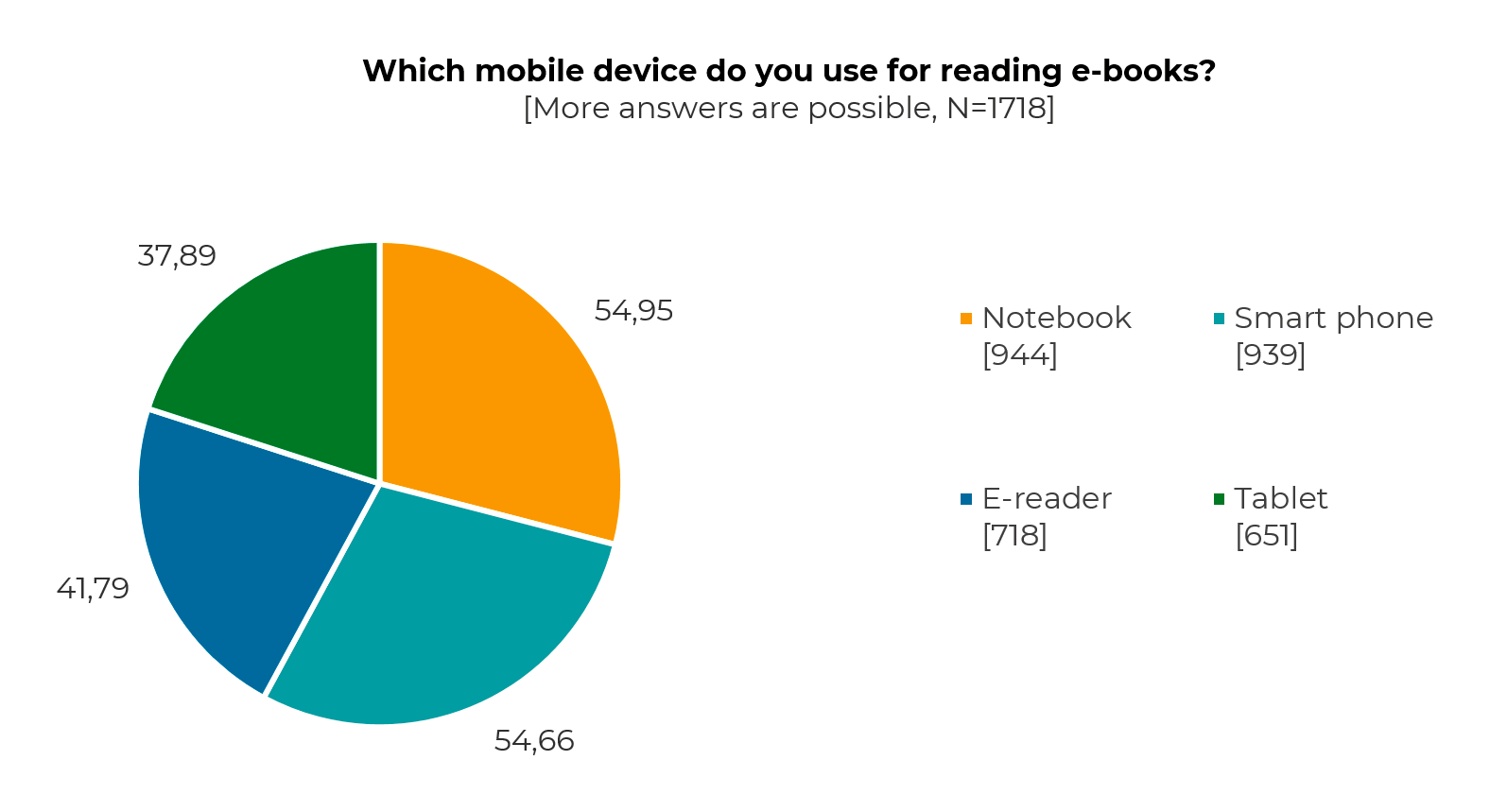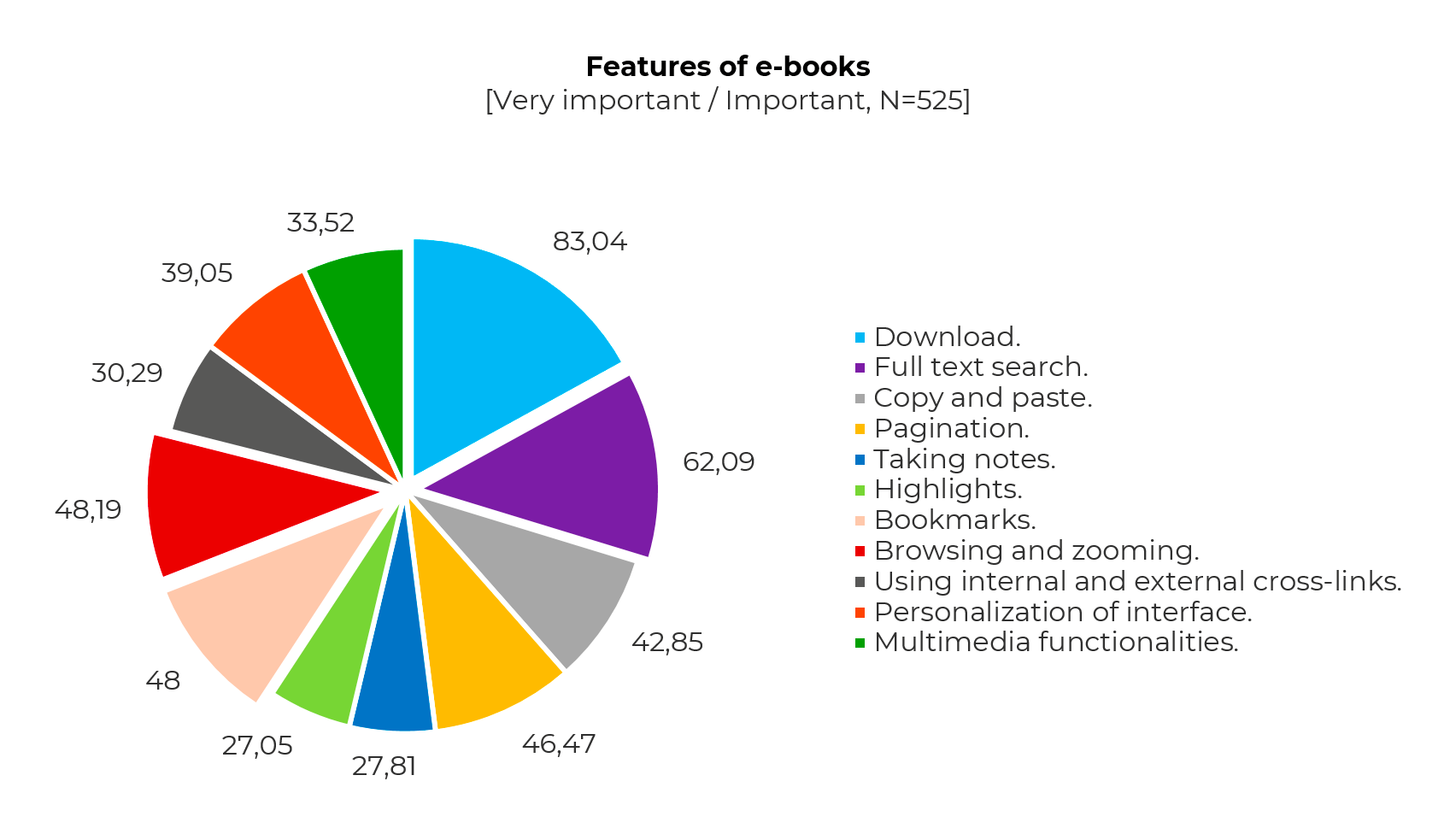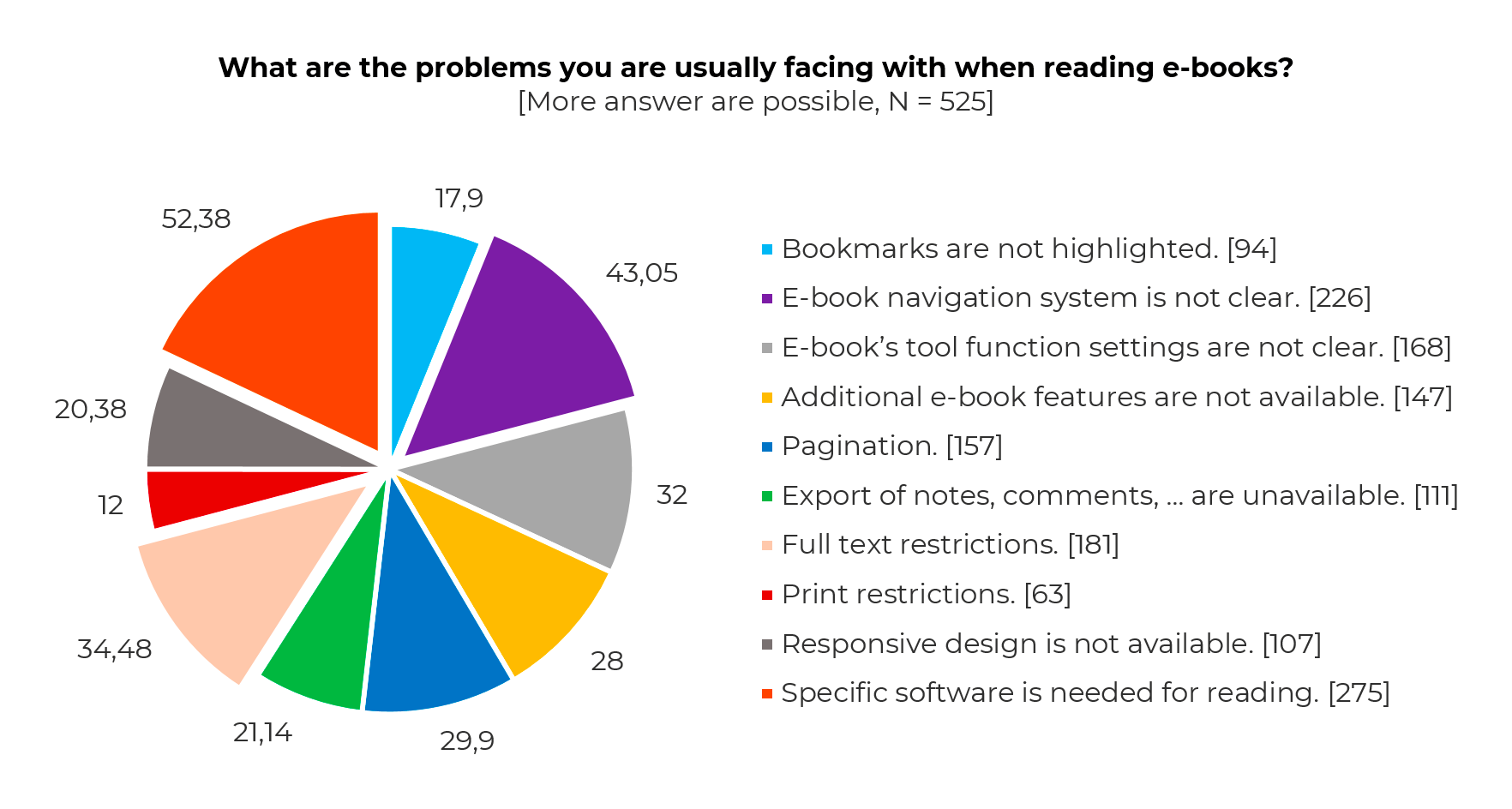Users' experience of reading e-books – survey findings

Last year the EODOPEN working group „Delivery formats of digitised material for special needs“ (WG 4) led by the National and University Library of Slovenia (NUK) prepared a survey that aims to capture a broader insight into the reading experience of users and to get information about positive or negative characteristics of devices and formats that support e-books.
The National and University Library of Slovenia conducted two surveys among the users of all fifteen EODOPEN project partners. The aim of the first survey was to get information about the user experience (e-book reading) of e-book readers, while the second one was done to reach and understand the needs of blind and visually impaired e-book users. Besides identifying user’s experience of reading e-books, the objective of the first surveys was to get an overview of advantages and disadvantages of e-book features, usage of different mobile devices and e-book file types.
Both surveys were conducted from April to 30 June 2020. Online questionnaires in ten different languages were disseminated by the EODOPEN partner organisations and their social media channels.
Survey on e-book users
The data received from 1718 respondents, who answered to at least 80% of questions, were analysed. Most of the respondents were aged from 20 to 29, so it is not surprising that the majority of respondents represent the student population. They were followed by the library staff and academics.
Here is a short presentation of the findings which will be used as a guide for further project activities and a detailed analysis of the survey results.
Access and e-Books usage
- Digital libraries are the most common means of accessing e-books (54,59%).
- A considerable number of respondents (41,56%), mostly students, library staff and academics, buy e-books via commercial services.
- 40,62% of respondents (mostly students) prefer to borrow or download e-books in the library.
E-Book reading habits and e-book features
- 86,03% of all respondents prefer to download e-books and read them offline.
- Respondents always or usually read an e-book from start to end (57,22) or they read the chapter/pages they are interested in (37,95%).
- The reading time is more than 30 min for 60% of respondents.
- Respondents marked downloading, full-text search, browsing, zooming and pagination as important or very important.

- The usual problems with e-books that the respondents reported included: problems with full-text restrictions, pagination, ambiguous navigation system and responsive design.

E-book formats, special software and format conversion
- 66,53% of respondents pay attention to the text’s format.
- Only 18,74% of respondents use software for converting the current format to a more suitable one.
- The most preferred file type for e-books is PDF (45,76%), followed by EPUB (38,36%). HTML, TXT and RTF were chosen by 1%-4% of respondents only.
Mobile devices for reading e-books
- The most preferable devices for accessing and reading e-books are a notebook and a smartphone.
- For e-book reading, mobile device respondents prefer e-reader (49,19%), followed by tablet (24,16%) and notebook (20,02%).
- According to the respondents’ answers, the smartphone is a less appropriate mobile device for reading e-books (5,88).

Survey on blind and partially sighted e-book users
Collected data of 525 respondents, who answered to at least 50 % of questions or more, were analysed. Most of the respondents were aged above 40 years old and the majority of them represent the retired population. Respondents were almost equally divided into three categories of vision loss: blind, almost completely blind and partially sighted. We believe it is important to consider the user needs of blind and partially sighted and also the needs that come with elder population regarding the digital literacy and usage of mobile devices.
Here is a short presentation of findings which will be used as a guide for further project activities and a detailed analysis of the survey results.
Access and e-Books usage
- Respondents prefer to borrow/download e-books from the library (58,1 %) and to access them via digital library (43,24 %).
- Respondents also buy e-books (34,67 %) and use illegal/pirate sources (8,00 %).
- 84,76 % of respondents prefer to download e-books and read them offline, followed by reading them online (26,86 %).
E-Book reading habits and e-book features
- Most of the respondents read from start to end (73,72 %) and mostly more than 30 minutes (75,24 %).
- 53,72 % of respondents search for the table of contents, abstract (20,95 %) and references (16,76 %).
- Most important are downloading functionality (83,04 %) and full text search (62,09 %).

- Respondents mainly have problems with: specific software for reading (52,38 %), e-book navigation system (43,05 %), and full text restriction (34,48 %).

E-book formats, special software and format conversion
- 54,29 % of respondents pay attention to text format.
- The most preferred file formats for e-books are PDF, TXT, EPUB. We assume that the use depends on remaining sight and assistive technologies.
- Third of respondents use software to convert current format. Most often used programs and applications are: Abbyy FineReader, Balabolka, Calibre, Voice Dream Reader, MS Word, Robobraille, Adobe Acrobat.
- Most often they convert to TXT format, followed by variations of MS Word.
Mobile devices and assistive technologies for reading e-books
- The most preferred devices are notebooks (58,29 %) and smartphones (51,05 %). We assume e-readers aren’t well compatible with assistive technologies.
- Most often used assistive technologies are screen reader software in native language (62,29 %) and screen reader software in other language (23,62 %).
- Screen reading software in native language is mostly used on all mobile devices while braille display with a keyboard is most often used on notebooks.
The differences between the use of e-book functions/features, file format, device they use and assistive technologies they use, can vary depending on how much one can still use the sight. That is why it is important to consider those who don‘t see and completely rely on assistive technologies and those who wish to use the remaining sight with help of various adjustments.
The survey findings will be used for the preparation of the Guidelines and recommendations for the provision of alternative and special formats and the Technical report on the implementation of special formats and conversion services. Both documents are deliveries of the Working Group: Developing guidelines and recommendations for delivery formats, which is led by the National and University Library in the Project EODOPEN.
March 1, 2021